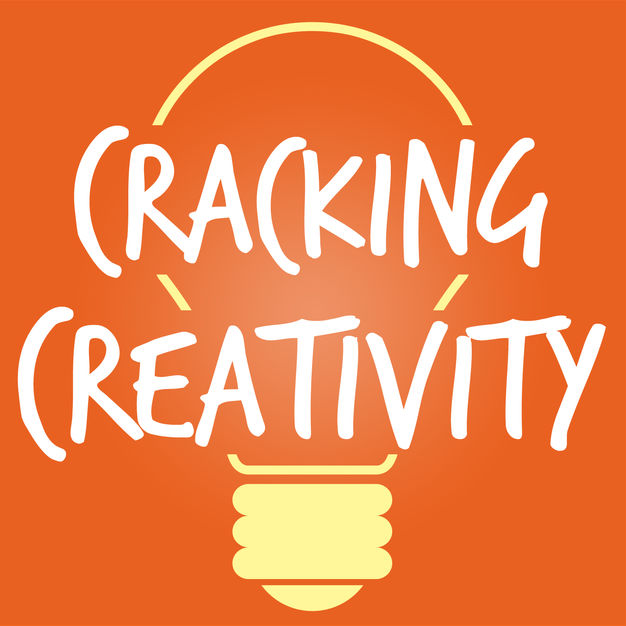
Cracking Creativity Podcast with Kevin Chung
Kevin Chung
The Cracking Creativity Podcast shows you how creatives turn their ideas into action, create interesting projects, and build an engaged audience through shared passions.
- 9 minutes 48 secondsRecap: Storytelling, Connection & Growth: My Top 3 Takeaways from Kent Sanders
Ghostwriting might sound mysterious, but after talking with Kent on The Standout Creatives, it’s clear: ghostwriting is one of the most human ways to inspire and connect.
Here are the 3 biggest insights from our conversation that can help your creative business thrive:
1. Your Story is Your Superpower
Your story isn’t just nice-to-have—it’s the reason people will trust and choose YOU. When you share your journey, you create emotional connections that no marketing hack can replicate.
➡️ Action Step: Map out a few key life or business moments. Pick one and share it with your audience this week.
2. Networking is About Real Connection
It’s not about knowing everyone—it’s about showing up for the people who matter most. A thoughtful gesture, like a handwritten note, can open doors you didn’t even know existed.
➡️ Action Step: Reach out to one person you admire in your network. Be specific about why their work matters to you.
3. Growth Comes From Staying Curious, Not Perfect
Creativity isn’t about getting it right the first time. It’s about learning, adapting, and growing through the process. Curiosity is your edge.
➡️ Action Step: Set aside 30 minutes to explore a book, podcast, or course that inspires you to think differently.
✨ If you found any of these insights helpful, I highly recommend checking out the interview I had with Kent Sanders. It really was a great conversation.
🚀 Are you an author, writer, or creative business owner who wants help standing out, or need support for your next book or product launch? Let’s chat. Visit The Standout Creatives to book a spot. But heads up, spots are limited, so grab yours while you can!
7 January 2025, 11:00 am - 1 hour 8 minutes5: Embrace Your Story: Building an Authentic Brand That Resonates and Connects with Your Ideal Audience with Bridget Baker
I’m really excited to take you on a journey into the world of authentic branding with someone who’s done it in the most unexpected way. Meet Bridget Baker a former professional ballet dancer who’s now flipping the script on branding and storytelling. Her story? It’s not just inspiring. It’s a game changer for anyone looking to share their unique perspective while staying true to themselves.
From Center Stage to Centering Your Narrative
Now, let’s talk about something that might feel a little uncomfortable at first: What if the quirks and odd moments you try to hide are actually your greatest asset? Bridget believes your branding should be a dance, and the steps you take, however unconventional, are what will make you stand out. Those moments in your life? That’s the heart of your story.
- Actionable Tip: Start small. Take a moment to reflect on your own journey. Are there parts of it you’ve been avoiding, fearing they might not “fit” with the brand you’re trying to create? Those might be the moments that resonate most with the people who truly get you.
- Bonus: Write down one personal story—something you’ve never shared before. It might feel vulnerable, but consider how that story could connect with your audience, even if you don’t see how just yet. This could be the bridge to people who really understand your message.
Breaking Free from Creative Conformity
If you’ve ever felt like you don’t belong in the mainstream or traditional marketing world, Bridget’s got your back. Most creatives fall into the trap of trying to look like everyone else, but Bridget’s advice is clear: Your differences aren’t a flaw, they’re your superpower. Your unique story doesn’t need to fit into a mold, and it sure doesn’t need to apologize for being different. Your story is the melody, and the world needs to hear it.
- Actionable Tip: Grab a notebook and jot down three ways your background makes you different. Be specific. These are the things you don’t want to hide anymore.
- Bonus: Write a brand statement that feels like you, not what you think you should be. Make it bold, honest, and unapologetic. And above all, make it real—the world’s tired of “polished” and wants to hear you.
Redefining Your Creative Value
It’s time to face the hard truth: if you’ve been underpricing your services or products, you’re not doing your talents justice. Bridget’s approach challenges creatives to see that everything in their journey, every skill, every lesson learned, is valuable. Your past and your experience are what give you the authority to charge what you’re truly worth.
- Actionable Tip: Take a deep dive into your own skills and experiences. What unique value do you bring to the table? How do those talents serve your audience in a way no one else can?
- Bonus: Create a “premium” offering that reflects the richness of your expertise. It’s not just about asking for more money—it’s about showing people just how much depth you bring to the table. Think about how to package your knowledge in a way that makes your audience see its true worth.
The Vulnerability Advantage
Okay, here’s the kicker: your vulnerability is your secret weapon. The stories you’re afraid to share, the ones where you feel imperfect or misunderstood, are often the very stories that create powerful connections with your audience. You’re not alone in your fears, and your audience will feel your authenticity when you let down the walls.
- Actionable Tip: Think about one moment from your creative journey that’s tough to share but feels like an important piece of your story. What would it feel like to let that moment come through, even if it’s just a small part of your narrative? How could this open up a deeper connection with your audience?
- Bonus: Create content that shares the emotional side of a challenge you’ve faced, don’t just focus on the “how-to.” Your audience craves the human side of your journey, the struggles, the lessons, the growth. That’s where the connection lives.
Building a Community, Not Just a Brand
Finally, branding isn’t just about getting people to notice you, it’s about creating relationships. Bridget’s approach is all about building a genuine community, not just a following. She encourages you to invite your audience in, get to know them, and create a space for real conversations.
- Actionable Tip: Think about how you can engage in a more personal, human way with your audience. Could you offer a Q&A, behind-the-scenes peek, or a direct communication channel where your people can interact with you more personally?
- Bonus: Try hosting a small, intimate virtual or in-person event where your community can ask questions, share stories, and connect with you. It doesn’t have to be a huge crowd, just a few like-minded people who really want to hear from you.
Key Takeaways:
- Your unique story is your greatest asset. Embrace the quirks and let them guide your brand.
- Vulnerability creates powerful connections. Don’t shy away from sharing the “imperfections” that make you human.
- Your differences are your brand’s superpower. Lean into them and let them shine.
- Pricing should reflect your entire creative journey. Stop underselling yourself and start charging what your expertise is worth.
- Authenticity trumps perfection every single time. Be yourself, and let everything else fall into place.
Bridget Baker has shown us that authentic branding isn’t just about looking good, it’s about being real, embracing your quirks, and letting your story shine. When you show up as yourself, you build stronger connections and stand out in ways you never thought possible.
Ready to turn your unique story into a standout brand?
If you’re a creative business owner ready to elevate your brand and launch your next big project, whether it's a book, a product, or anything in between, let’s make it happen. Just visit The Standout Creatives and book a call. I’m here to help you bring your vision to life in a way that feels authentic and impactful.
Spots are limited, so if you're ready to dive into a conversation about your next big idea, don't wait. Secure your spot today and let’s create something that sets you apart for good.
6 January 2025, 11:00 am - 27 minutes 38 seconds3: Creative Business Success: How Starting Small Leads to Big Wins with Early Supporters
Starting small doesn’t mean thinking small. In this episode of The Standout Creatives, I’ll show you how launching with a small, engaged audience can be your secret weapon for creative business success. Whether you’re working on your first course, digital product, or any big idea, this approach will set you up for growth without the stress of trying to “go big” too soon.
Here’s what you’ll learn:
- The Myth of “Go Big or Go Home”: Why starting small can actually lead to success.
- The Power of Early Supporters: How to attract the right people who will champion your work and become your first superfans.
- Small Wins, Big Momentum: Real-world examples of creatives who turned small audiences into thriving businesses.
- Your Action Plan: A simple, repeatable process for launching small while building confidence and connection.
You don’t need a massive following to create something amazing. You just need to take the first step—and I’ll help you make it happen.
Who This Episode is For
- Creative entrepreneurs feeling overwhelmed by the idea of launching to a small audience.
- Digital product and course creators who have a small but passionate fan base.
- Anyone who’s tired of chasing vanity metrics and ready to focus on authentic, meaningful results.
Key Takeaways:
- Start small, think big: The most successful launches often come from starting with the resources and audience you have now.
- Engage early fans: Focus on people who already know, like, and trust your work—they’ll be the foundation for your future growth.
- Momentum matters: Celebrate the small wins because they’re the stepping stones to your standout business.
Resources & Next Steps:
- 💡 Schedule a free standout business discovery call: Let’s brainstorm how you can take your first small step toward a standout creative business.
- ✍️ Grab your copy of We Are All Creative: Fuel your inspiration with 52 quotes and prompts designed for creative entrepreneurs.
- 🎧 Subscribe to The Standout Creatives podcast: Don’t miss future episodes filled with actionable tips to grow your creative business without sacrificing your sanity.
Final Thought:
Big success doesn’t require a big start. It just needs a small, intentional step forward—and the right people to walk alongside you. Ready to take yours?
17 December 2024, 11:00 am - 1 hour 13 minutes2: Ghostwriting Secrets: How Creative Entrepreneurs Can Use Their Passion to Build a Profitable Standout Business by Telling Powerful Stories with Kent Sanders
Ghostwriting might seem like a secretive craft, but it’s anything but. Kent Sanders breaks it down: this isn’t about hiding in the shadows—it’s about creating stories that genuinely connect. As the founder of Inkwell Ghostwriting, Kent has helped entrepreneurs and leaders bring their journeys to life in ways that inspire and resonate.
If your story isn’t reaching people, what’s getting lost in translation? Is it the message? The delivery? Or maybe, it’s just missing that human touch.
Your story is the bridge between you and your audience. If you fail to connect, you’re not just missing an opportunity—you’re letting relationships, impact, and trust slip through your fingers. But the good news? When you get storytelling right, it transforms everything.
In this episode, Kent takes us on his journey from college professor to ghostwriting powerhouse, revealing how storytelling goes way beyond just putting words on a page. It’s about digging deep, building connection, and translating someone’s vision into a narrative that lands exactly the way they dreamed it would.
Three Big Takeaways and Actionable Steps
1. The Power of Understanding: Get Inside Their Story
Ghostwriting (or any kind of storytelling) isn’t about slapping words together—it’s about understanding the person behind the story. You’re not just writing; you’re capturing their essence.
- Actionable Tip: Ask deeper questions before starting a project. Not just, “What’s the story you want to tell?” but, “Why does this matter to you?” and “What do you want your audience to feel?”
- Bonus: Try mapping out key moments of your journey to see the bigger picture. This "story map" becomes your roadmap for building a narrative that sticks.
2. Real Connections Beat Surface-Level Networking Every Time
Networking is about relationships, not resumes. Forget the business cards and LinkedIn requests. It’s the small, thoughtful gestures that build trust and open doors you didn’t even know existed.
- Actionable Tip: This week, send a quick, personal note to someone you admire—a handwritten letter, a voice memo, or a thoughtful email. Be specific about what you love about their work.
- Bonus: Make a habit of checking in with your network regularly—especially when you’re not asking for anything. Think of it as planting seeds for future growth.
3. Stay Curious, Stay Open, Stay Moving
The creative journey isn’t about perfection—it’s about progress. Every failure is a chance to refine your craft. The most successful creatives? They’re the ones who embrace learning, even when it’s uncomfortable.
- Actionable Tip: Set aside 30 minutes this week to dive into something new—a book, podcast, or course that challenges how you think.
- Bonus: Reflect on a recent mistake. Write down what it taught you and how you’re using that lesson to grow.
Kent Sanders reminds us that storytelling isn’t just a skill—it’s a superpower. Done right, it can transform your business, strengthen your relationships, and amplify your impact. The question is: Are you ready to take your story to the next level?
Need Help with Your Creative Business?
If you’re a creative entrepreneur ready to make your business stand out, visit The Standout Creatives. Whether you're launching your next book, podcast, course, or digital product, I’d love to help you turn your vision into something extraordinary.
Spots are limited, so if you’re ready to chat about your next big idea, don’t wait—sign up now to grab your spot before they’re gone! Let’s make your next launch the one that truly sets you apart.
11 December 2024, 10:00 am - 13 minutes 52 seconds1: From Burnout to Breakthrough: Relaunching as The Standout Creatives
Big news: the podcast is back, and it’s got a whole new look, name, and purpose. After taking a much-needed break, I’m beyond excited to relaunch as The Standout Creatives! This isn’t just a new name—it’s a new mission to help you build a business that stands out while staying true to your creative passion.
In this episode, I’ll take you behind the scenes:
- The Cracking Creativity journey: Lessons I learned from inspiring interviews and how they shaped my perspective.
- Burnout and breakthroughs: How stepping back helped me reevaluate and refocus on what matters most.
- Why the rebrand matters: My mission to bring you practical strategies for turning creative passion into sustainable success.
- What to expect going forward: Actionable advice, authentic stories, and insightful interviews with creative business owners who’ve been where you are.
If balancing creativity with running a business feels overwhelming, you’re not alone. This podcast is your guide to standing out, scaling up, and thriving—without burning out.
Ready to take the next step?
Book one of my limited one-on-one strategy calls, where we’ll craft a custom plan to grow your creative business with clarity and confidence. Let’s build something amazing together!
3 December 2024, 12:19 pm - 10 minutes 16 seconds[Recap for Episode 91] Creativity vs. Natural Inspiration, Stealing in Art, Taking Chances, and Learning from Your Mistakes – Cracking Creativity Episode 91
A recap of episode 91 of the Cracking Creativity podcast. If you liked it, check out the full episode with Erik Young where he talks about creativity vs. natural inspiration, stealing in art, taking chances, and learning from your mistakes.
6 March 2019, 6:00 pm - 1 hour 3 minutes92: Nick Gray on Turning Your Hobby Into a Business, Standing Out in a Crowded Market, and Being a Leader
Nick Gray is the founder of Museum Hack, a twist on the traditional museum experience. The funny thing about Nick is, he used to hate museums. That is until he went on a date that forever changed his life.
During a snowy day in NYC, a girl brought him to the Metropolitan Museum of Art and showed him artifacts, furniture, and other interesting things in the museum. This changed Nick’s perception of what a museum tour could be. That’s when he started frequenting the MET, and learned to love museums.
The first time Nick charged for a museum tour, he even tried to give money back to the people who took it. He had so much fun with the tour that he thought he shouldn’t charge people for it.
“The first tour that I actually charged money for, it was a Sunday morning tour at 11 in the morning, and I was like ‘Alright I’ll just see if I can charge money. I’ll charge them $20. See if they come.’ And everyone gave me their cash, and I gave them the tour. And I had so much fun Kevin, I had so much fun, that at the end of the tour, I think I freaked everybody out because I gave them all of their money back. And they were like ‘Why are you giving us… is this Candid Camera or something?’ and I was like “No, I had so much fun. It feels dirty for me to take your money, to do something that I love, something that I’m having so much fun with.’ So for me that was the first time I experimented, but it didn’t really go so well.”
Before Nick started Musuem Hack he was a salesman of flat screen monitors. But the success of his initial tours, and the experience he gained as a salesman, allowed him to turn his passion project into a business.
“What I think is special about what I’ve done with Museum Hack that your listeners might find fascinating, is that I took something that was a passion project, something that I just did for a hobby, for fun, and I was able to convert it and make it into a business. And my time selling these screens really taught me the importance of marketing and sales and dollar value of creating premium experiences. So for me that was really helpful.”
The thing that makes Museum Hack different from other museum tours is what Nick likes to dub the 3 G’s. While most other tours are zigging, Museum Hack is zagging.
“The three Gs. These are the three things that makes Museum Hack completely different from most museum tours. Three Gs. Number one, guides. Number two, games. and number three gossip. So it’s the tour guides that are so engaging, that are actors and educators, and science teachers, and musicians who write their own tours who are so special. That’s the guides. The games means that the tours are so fast paced. They’re ultra fast paced. They’re two to three times as fast as most museum tours. And we also do selfie challenges. We takes shots of espresso or drink some wine. And then the gossip, that’s the juicy back story. The cool stuff about the art that we like to talk about.”
Instead of trying to find people who are knowledgeable in history and museums, Nick hires guides who are good with people. Anyone can learn about art, but not everyone is good at connecting with people.
“The number one thing we look for is someone’s ability to be a good host. How is their body language? How comfortable to they make people? Do they make us laugh? That’s the most important thing. It’s not about their knowledge. It’s not about how much they know about the art history. It’s about how do they make the guests feel. Because that’s what we’re trying to do, right? We’re trying to make people comfortable and we’re trying to get them to warm up inside the space. So that’s really what we hire for first and foremost. And then we can teach them about the art. We can teach them about the museum… We hire folks that are really good with people.”
He also gives his guides the freedom to create their own tours. When you are building something yourself, you become passionate about it. So, Nick gives them the freedom to come up with their own tours and write their own scripts.
“We think that having our tour guides write their own tours is so powerful because the guests and the visitors can hear that excitement and that passion, and you can hear me talk right now, right? I’m excited. I’m pumped up. I’m jazzed to talk about my business with you, and that’s because I’m not going off a script. No one is telling me what to do. Our tour guides have to be the same way, so we let them explore the whole museum, come up with their own tours, stuff that they’re excited about and they write their own scripts.”
One would think that competing with instant gratification culture would be a detriment to Museum Hack, but it isn’t. Nick tells his guides to embrace people’s attention spans and work it into their tours.
“We’re dealing with an increasingly ADD generation. These are people that are like me that are on their phones every two or three minutes. I mean, it’s not just millenials. It’s people of all ages that have a short attention span, and we try to teach our museum friends ways to engage with that type of audience. Make it personal. Keep it fast. Don’t be afraid of smart phones. Encourage people to take selfies and pictures. Things like that.”
In a world where museums can seem stale and uninteresting, Nick has captured people’s imaginations. That sort of innovation requires curiosity, risks, and failures, and that’s exactly what he has done with Museum Hack.
“Figuring out like you did, people who have that curiosity, and people who are willing to troubleshoot and make failures, and I’m guessing the podcast hasn’t been perfect since day one, would that be a correct assumption?… That willingness to make mistakes and resourcefulness to figure things out. Those are two key things we look for.”
21 February 2019, 5:36 pm - 1 hour 19 minutes91: Erik Young on Creativity vs. Natural Inspiration, Stealing in Art, Taking Chances, and Learning from Your Mistakes
Erik Young is one of my friends from high school. In this episode we broke from the normal format of the show and talked about our thoughts on creativity, inspiration, the education system, and learning from your mistakes. We also talked about some of the projects he's worked on including his children's book and work as owner of 7Mangos.
8 January 2019, 6:00 pm - 10 minutes 30 seconds[Recap for Episode 90] Chalky White on Asking What If, Being Persistent, and Never Giving Up
A recap of episode 90 of the Cracking Creativity podcast. If you liked it, check out the full episode with Chalky White where he talks about asking yourself what if, being persistent, and why continuing to try leads to success, among many other things.
4 December 2018, 6:00 pm - 1 hour 30 minutes90: Chalky White on Asking What If, Being Persistent, and Never Giving Up
Chalky White grew up in an abusive household, so much so that he gave up trying in school as an act of rebellion. When he 17 he joined the police cadets where he worked with alcoholics and drug addicts. It was at this point that Chalky realized he wanted to be in service of others.
One day his friend asked Chalky if he wanted to go skiing. By saying yes to his friend’s request, Chalky unknowingly changed his life. Even though he wasn’t very good at skiing on that first trip, he was hooked.
A year after that first ski trip Chalky went to Andorra and decided to become a ski instructor. When he ran out of money, he went back to Britain to become an encyclopedia salesman just so he could go back to Andorra.
After a series of tests in Andorra, and failed attempts to become a licensed instructor, Chalky went to New Zealand to get certified. Chalky was constantly told he was never going to be good enough to be an instructor, but through persistence and his system of What If? questions, Chalky was finally able to gain his certification.
Chalky not only became a certified instructor. He also wrote his own book on skiing and became a motivational speaker through it all.
In this episode, Chalky talks about asking yourself what if, being persistent, and why continuing to try leads to success.
Here are three things you can learn from Chalky:
Ask Yourself What IfMany of us give up at the first sign of failure. We let our lack of success define and shape us. What if it didn’t have to be this way? What if we could continue on despite our doubts?
That’s why Chalky developed his what if factor questions. These questions help him decide whether or not he should pursue his goals, despite his doubts.
“The big dream came true because I never, never quit, and it all happened… because I got the semblance of something I now use in my speech, “How to say nay to your naysayers and have the last laugh,” which I call my What if factor. “What if I don’t continue on with this? What if I don’t follow through? What are the consequences of that?” Of course when you ask yourself that sort of question, you really don’t like the answers at all. In fact, you sort of despise and hate them, but they’re enough to stimulate you to want to be asked the opposite question. “What if I do continue on? What can be the repercussions and consequences of that?” And of course you really like your answers to that.”
The benefit of constantly asking yourself positive what if questions is that they make you want to continue on. They help to push you forward instead of falling back or giving up.
“By keeping on asking yourself those questions, the negatives and the positives of the What If? factor, it tends to make you want to go on and on and on. And that’s really the premise of my speech.”
Chalky believes these what if questions helped him publish his book. They helped him get past his biggest naysayer, himself. They have helped guide him through many things in life.
“If I hadn’t asked myself those What If? questions, I’m not sure that I would have followed through and published that book. So by making myself not listen to a naysayer… it tends to translate into… self-doubt. Doubting yourself can obviously be the biggest naysayer of all. So by following through and continually asking myself those What If? questions, I actually was successful. And that’s basically what I’ve done with very many things through my life.”
Be PersistentThere are many things that help you sustain a long career as an artist. Talent and luck help a lot, but one thing is often overlooked. It’s something we can all control. That thing is persistence.
Most of us give up after the first sign of failure. We give up when things are looking grim. We give up when things don’t go our way. We give up when someone says no. But we can’t let those setbacks stop us dead in our tracks. We must go on despite our doubts.
Chalky doesn’t believe no means no forever. He follows up with people until he gets a yes.
“Every time somebody says no to you, that you can’t do something, or says no I don’t want to buy that, it gets you closer to the big yes. So in other words you get “No I don’t want it, no I don’t want it…” then… because you kept following through, he says yes, and that big yes, if you’re a salesperson… could end up being the biggest sale of the year for the company.”
We need to constantly push ourselves, especially when we are down. It’s easy to lose morale when things aren’t going your way, but if you really want to achieve your goals, you have to be persistent.
Sometimes we just need that extra push to keep us going. That’s why Chalky constantly asks himself what if. If you don’t like the answer to those what if questions, you have no choice but to keep going.
“It’s no good just asking yourself that question once, you’ve got to keep with those questions. You have to keep on asking, sometimes several times a day… Because those questions can really help to keep your morale up because when someone keeps saying no to you all the time, it’s very easy for your morale to go completely down the toilet, and if it’s a dream or a goal that you really really want to achieve, you’ve got to find a way of not allowing yourself to quit.”
The Only Way to Succeed is to Continue TryingIf you want something bad enough, you will put all your effort into it. You will do everything you can to succeed.
That’s often the thing that separates people who eventually succeed and those who don’t. Some people just can’t handle the constant grind, the constant rejections, the constant failure.
Failure never stopped Chalky from achieving his dreams. He kept attempting his exams even after multiple failures. He became an instructor despite the doubters. He wrote a book even though people told him he shouldn’t. There’s something inside him that told him to keep going.
“Some people just can’t be bothered. There are those out there who go “Who really cares?” But then there are others that really want it, but sometimes the fear of failure stops them, there’s no doubt about it. When I was trying to go through those exams where I kept failing and failing and failing, I was very scared that I wasn’t going to actually get there. There’s no doubt about that. But there was just something inside me that just kept saying “You’ve go to keep going,”
When you want something bad enough, you will go on no matter what happens. Chalky uses his system of what if questions to help him stay persistent.
“In my opinion, if it’s the right dream for you or the right goal for you, you will find a way to keep going, and the What If? factor is just a way of helping that effort and determination to go on and on and on, whatever happens.”
I know it’s scary to put yourself out there. Rejections and failures get to everyone, but think of the alternative. Think of all those people who had great things to share with the world, but were too scared to overcome their fears. Do you want to let your great ideas go to the grave with you?
“I’m sure there’s all kinds of people who’ve invented great things and written great things, and are great entertainers, and on and on… but didn’t actually get their things out in front of the public just because they couldn’t be bothered, they were scared, and were too afraid maybe to try and overcome that fear. As has been said in the past, the only thing to fear very often is fear itself.”
13 November 2018, 6:00 pm - 10 minutes 15 seconds[Recap for Episode 89] Victor Yocco on Tailoring Your Message, Finding Support, and Having an Effective Website
A recap of episode 89 of the Cracking Creativity podcast. If you liked it, check out the full episode with Victor Yocco where he talks about why your message should change based on your platform, the importance of a support system, and the power of creating an effective website, among many other things.
23 October 2018, 5:00 pm - More Episodes? Get the App
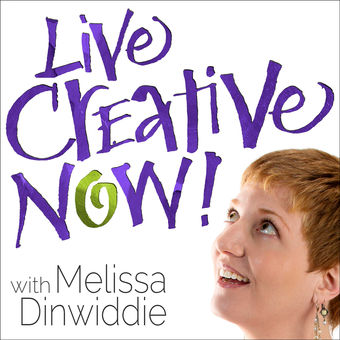 Live Creative Now! with Melissa Dinwiddie: Happiness | Creativity | Productivity | Practical Inspiration | Lifestyle Design for
Live Creative Now! with Melissa Dinwiddie: Happiness | Creativity | Productivity | Practical Inspiration | Lifestyle Design for
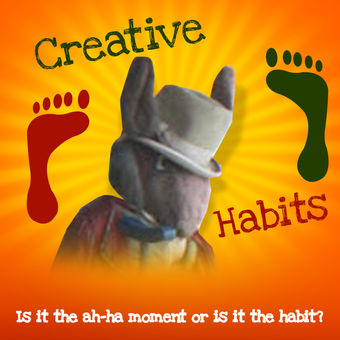 Creative Habit's Podcast | Exploring Habits for Tapping Into Creative Consciousness
Creative Habit's Podcast | Exploring Habits for Tapping Into Creative Consciousness
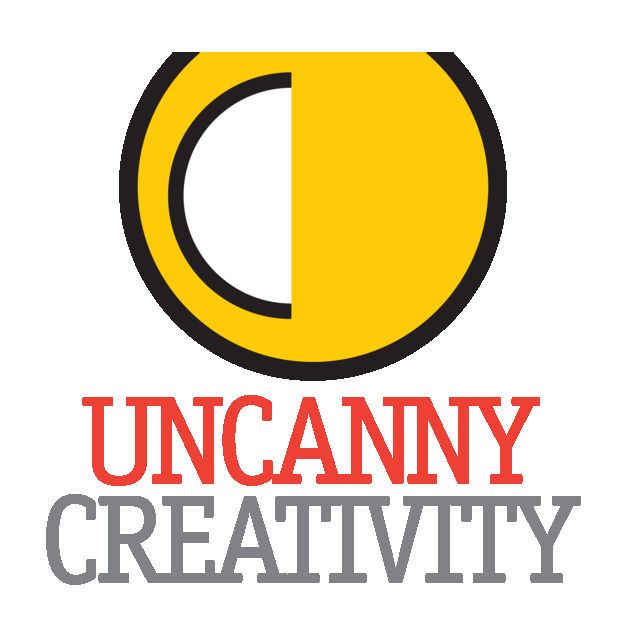 Uncanny Creativity Podcast
Uncanny Creativity Podcast
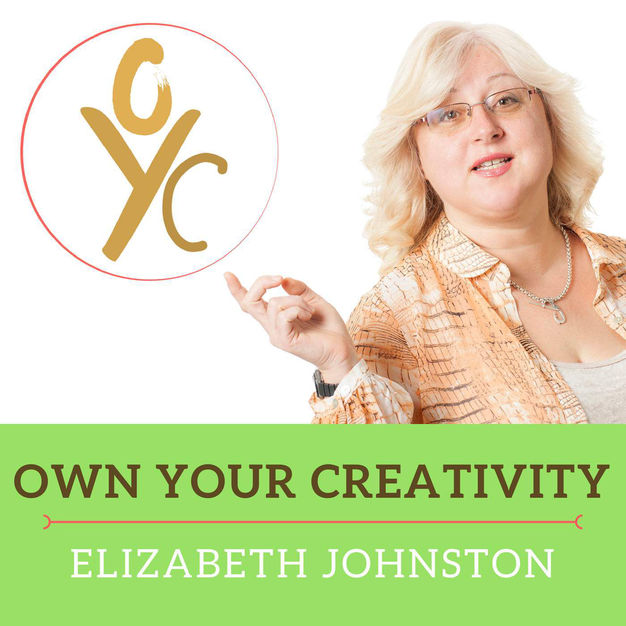 Own Your Creativity
Own Your Creativity
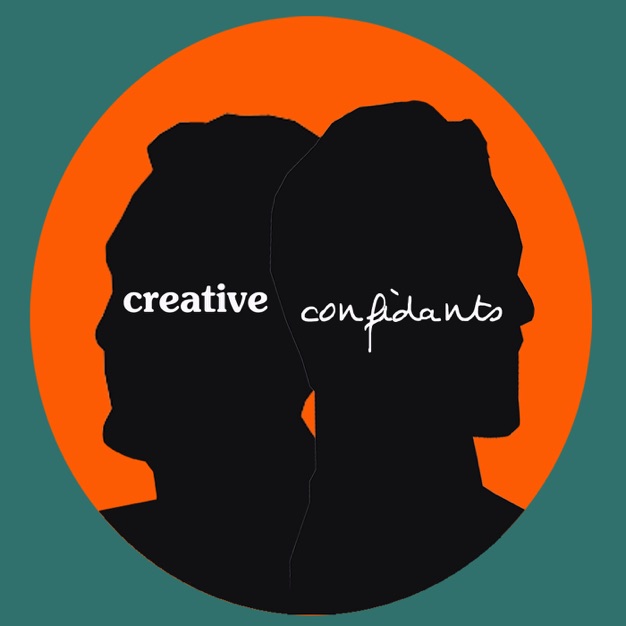 Creative Confidants - Exploring and Encouraging the Origins of Creativity
Creative Confidants - Exploring and Encouraging the Origins of Creativity
Your feedback is valuable to us. Should you encounter any bugs, glitches, lack of functionality or other problems, please email us on hi@moon.fm or join Moon.FM Telegram Group where you can talk directly to the dev team who are happy to answer any queries.